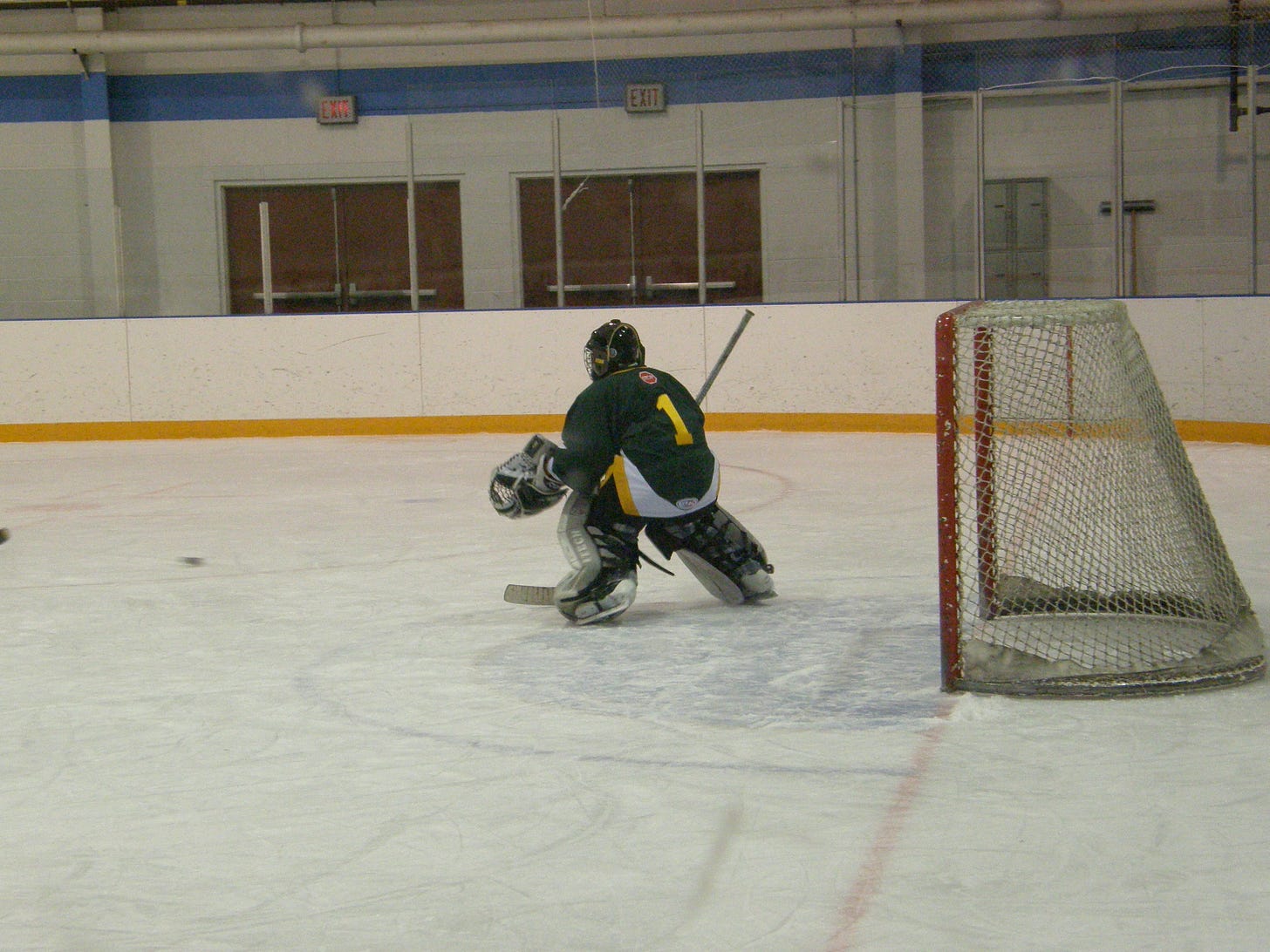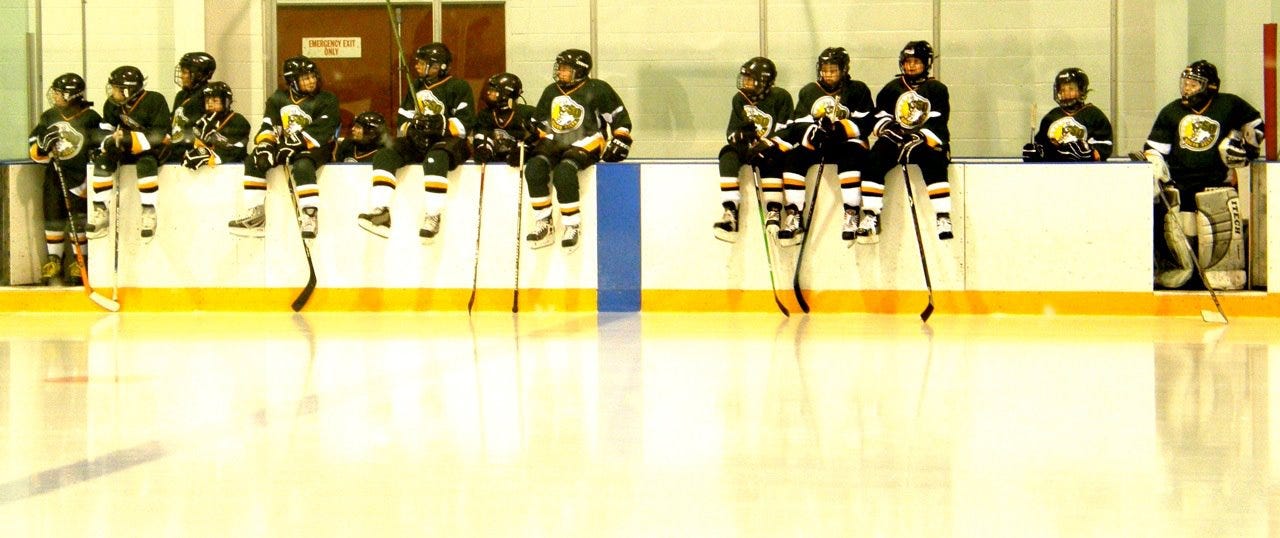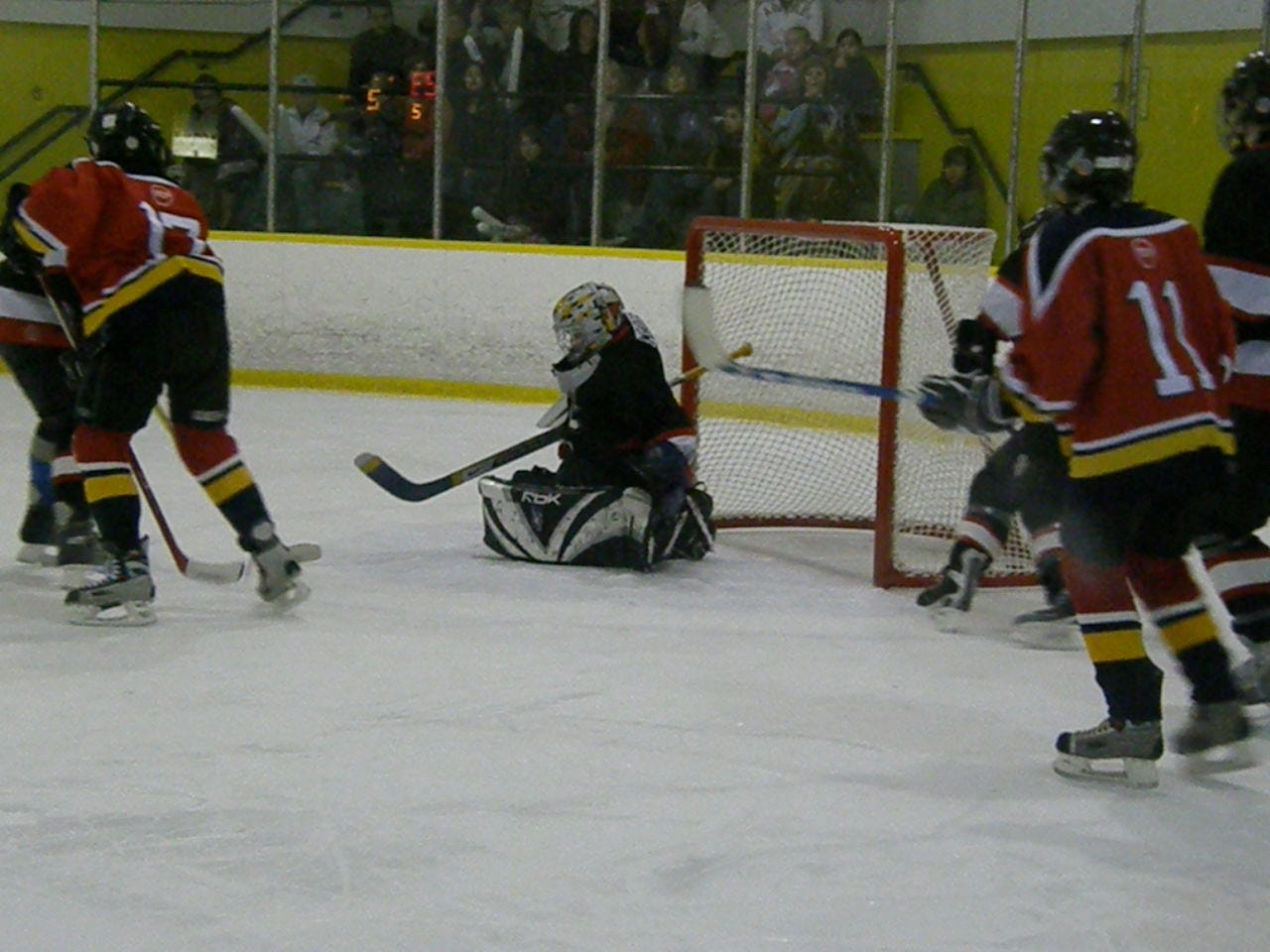character in isolation--is that a puck in sight?
One of my early teachers—Sue Ann Alderson—guided our process with the question:
What serves the story?
What a deceptively simple question.
Although this post is about creating “Scene,” even in that is the basic question: How—in what mode—is the story asking to be told?
I’ll be honest: there are times I feel that sharing knowledge about writing feels odd. (My recent post on dialogue, for instance—there is so much more to say. I found myself mulling over for days afterward.)
I can write about “scene” and tell you that—more often than not—“scene” is how a story should be told. But there are always exceptions. Creating is always a mix, a collection of choices, a deciding of what and when. And “exceptions”—outliers—can be exciting.
I begin here with the idea of “what serves,” then talk about “scene” and “narrative summary”… and suddenly the whole process feels too complex. I’ve been writing this piece for more than a week, with years of practice and thought behind it, and I begin to wish I was terribly opinionated and could spout, “Here’s how you should do this!” But the truth is that there are many choices. The more you write and read, dissect, review, and build on your knowledge and be willing to explore…
What do you want to be when you grow up? I ask the story.
Choices, choices
You can create a strong story-sharing voice, with or even without an “obvious” narrator (“Narrator”—there’s another post!) But creating a story without “scene” is a challenge. For those starting to write, it’s easy to slip into scene-less mode, especially with a strong voice. The voice can feel to be enough, and all stories—beyond flash fiction and short works—will need even some bit of narrative summary. So narrative can take over.
Narrative summary has its place: it can include significant informational and transitional bits, and can gallop through those passages when “nothing happens.” But too much summary can cause the reader to feel left out, and render characters flat.
Readers are included in the fictional “real time” by the creating and reading of “scenes,” in which the characters seem to wrest all out of the hands of “narrator,” and the story-telling becomes 3D+.
Sitting in a writing workshop, you might say the difference is “telling or showing.” We glibly trot out advice and principles, but at the end of our own individual and isolated writing session… What serves the story?
Let’s focus on how to create “scene,” and then—armed with knowledge—something resembling “decision” about mode begins to be possible.
Waiting… waiting…
First things first
I think of the first draft as a necessary Thing that just has to be done. For me, this is not a pretty process. It can have its moments of joy, yes, and a slowly-growing sense of pleasure. But for the most part, it’s work, with an overhanging sense of anxiety: “Will these pieces ever come together?” (Honestly, I love the process! But it is Work that exhausts, mentally, emotionally, and even physically.)
I do a hybrid of writing my way in and through, along with spasms of what might appear to be outlining. I never know if I’ll get to the end, or toss it altogether. If nothing else, that thought pushes me forward out of sheer curiosity: can I do it? (From experience of having finished, I remind myself, Yes!)
But there is always some vestiges of that anxiety until I write the closing line of the first draft. At that point, I start to breathe again, and then I begin to breathe into the second draft, too.
At times and in sections, that first draft can be nothing more than rambling narrative, chunks of summary, little more than fleshy outlining, really, and often skeletal. This is how many writers work, and this post, like many for The Unschool, has been birthed of just this question: How to take such narrative, and evolve to full-blown “scene” so that the reader can experience the story as opposed to being told the story.
In the “communication” piece I recently posted, I mention “scanning” for dialogue. Lack of dialogue on a page can also indicate a lack of “scene.” (Note in the post on dialogue/communication, I included a photo of a page of The Rain Heron, a novel with un-punctuated dialogue. The “dialogue” is there, but it slides seamlessly into the text. What is the effect of no punctuation? Or, indeed, of punctuation?)
You can create “scene” without dialogue, but sometimes—often—the existence of dialogue is a giveaway—it reveals that this is indeed a scene, with action, in which something happens. Take a look at your pages. Is there a mix of narrative, dialogue, action? Should there be? (Suggestion: flip open the novels you’ve most enjoyed. What is on the page?)
If you have big blocky paragraphs, filled with “information” or summary, and you want to break out of that mode, then dialogue can be a starting place.
Sit with eyes closed until you can see your characters, and hear them. What are they saying to each other? What do they want to say to each other? What is the tension in the space? Can you feel it?
Consider starting with the dialogue, and building around it. Or consider the tension—do you know what that’s about? How can you bring the readers to this knowledge?
Or start with a motion/action/gesture someone is making. How does another character read the action? Correctly? Incorrectly? You might start there. As in the dialogue post, so much of story-creating is about communication. And miscommunication.
and finally some action…
How to define “scene”
In a scene, something happens. You should be able to say “this scene is when ____fill-in-blank_____ occurs.” And can you articulate the resulting growth or change or even just some “shift”?
If you cannot fill in that blank, and answer the question, then ask yourself, “What is the purpose of this part of the story?” (Do NOT cut if you are still in early drafts stage. So much of writing is gut-led. Often we don’t fully understand why we’ve written what we have until much later. If you toss, you lose that opportunity for understanding.)
In the above photos, we see the lone goalie—maybe that is the main character or narrator. Then we see the waiting, the accumulation of cast/characters, the newly created and untouched ice, or setting. Then the action, the playing—what we’ve been waiting for. Something is happening! Think of the layers of this: the coach has given quiet instruction, and now might be shouting direction; the assistant coaches will be directing players on and off ice, making sure there are not too many; the players are communicating with team-mates and chirping opposing team players; the fans are… well, there is a whole lot of stories there! The little sibling rink-rats have all their own stories, too. The exhausted and exhilarated parents are out in the stands. There’s the skate-sharpener person behind the counter of the shop; the snack person with their licorice strings, week-old wieners turning around, and bad coffee; the zamboni guy hiding in the back, waiting to refresh the ice, working on his correspondence first year English course… Meanwhile, some kid who’s never scored a goal, always plays defense, has just gotten his first goal ever… and his parents are arguing about whether to give him $10 for it… A number of scenes could be written from this material, or one, with elements chosen from this collection of characters and snippets.
What might be the focus? Who is the main character? Is there more than one?
What HAPPENS?
Scenes have a definable “shape”—that is a beginning or outset, a middle or body, and a close… even as some thread extends from it and joins with the next, one rail-car after another. Can you see these elements—beginning, middle, end, and thread in-and-out—in your scene?
So often, after years of reading, creating a scene is something you’ve simply absorbed. You may already think “in scene.” But if your first draft rambles on for pages, with no points to breathe, no chapter breaks, and—seemingly—little “happening,” (or “things happen” but they are summarized, and when a reader reads they mention feeling distanced) then it’s worthwhile to dissect to understand what you’re doing. As always, pick up favourite books, and dissect them, too.
Scenes also have a definable time; the time does not meander.
Consider if the story advances over a longer or shorter period of time. If it’s a longer period of time, in which not much happens, then you probably do not need a scene. Summarize! Move it along.
But if something happens, in a relatively short amount of time, it’s a scene waiting to be written.
More on Time…
Watch for verbs of thinking and introspection. When you character thinks, realizes, remembers, wonders, knows, recalls, believes, these “shortcut” words lead to something static, and not scene.
Like the shortcut of adverbs—another topic, but they do share this quality!—these words effectively cut the reader out of not only “what happens,” but also “as it happens.” Thinking is not doing or being. Note how such introspection frequently even cuts out other characters. Be wary of times in which your character is alone and ruminating!
As much as we might like to think we grow when we’re out in the wilderness all alone, whatever such “growth” is will not be tested until that person is back face-to-face with others. Only then will we see convincing evidence otherwise. Go ahead and test the theory!
Another element that can cause scene to run over or lose shape is too much movement back and forth in time—bringing in past history, and even future, or flashbacks that are ill-placed. Go back to the “shape” of a scene: beginning, middle, end, and threads.
Sometimes a flashback is a scene in itself, or has that sense of shape with bookends of present time: for example some introductory piece (current moment), followed by flashback, transition back to current time, closing with some piece of “shift” (“change” and “growth” does not have to be huge—it can be incremental, and with flashback is often exactly that). But the “shift” is the “something happened” of the scene.
Mapping narrative, scene, transition…
After your first draft is complete, you might map out the sequence of modes you have in your manuscript. e.g. prologue/scene; transition/narrative-summary; scene; summary; scene; flashback; scene…
Map in a way that makes sense with how you work and visualize: table/spreadsheet; lengthy piece of paper and pen; cards you can re-order as you need.
Mapping can inform you of where there might be holes, or where you have too many similar pieces back-to-back. Much like “scanning for dialogue,” this process can find balance between the parts and modes in which you’re working.
A single post on a topic can’t touch on all sides, but can give us something to ponder.
With thanks, to Sue Ann —
Thoughts? Comments?





I remember having (+) and (-) marked beside different scenes when outlining a novel in your class. Your advice on "scene" having a shape reminded me of this memorable activity. If I have a beginning of a scene that is a minus (-) for the protagonist, it should proceed to bring a plus (+) by the end.
I think some of the scenes in my story are static, without any advancements in time and action. For example, some scenes where the protagonist enjoys her food last for more than one page. It's still a rough draft, and I was thinking of cutting out most of them, but I just learned from the post that they do not qualify as a "scene" after all. Maybe it could be used as part of a scene; an element that threads actions/time in-and-out within a bigger picture?
"Creating is always a mix, a collection of choices, a deciding of what and when. And "exceptions"—outliers—can be exciting." Here, can I understand "exceptions" as things like unexpected events or character decisions added to make a story more interesting?
Thank you so much Alison! Reading through this piece felt like mining. There are so many questions I ask myself that I think will be put to test/rest once I go through my drafts referring back to this piece. The defining scene section was particularly impactful for me, because for most of my writing I don't consciously mix the different elements of the story and I have a harder time with transitions between scene and narrative. More on my reflection of this piece later. Thanks again :)